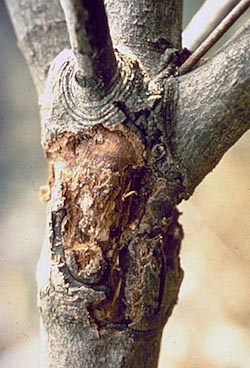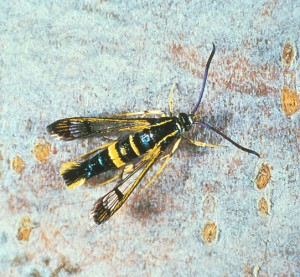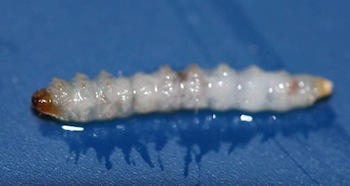Behind the Dogwood’s Bark
by Ray Novitske, Fairfax Master Gardener

damage from borer
This pest, named after the first plant it was found on, doesn’t limit itself to dogwoods. It will attack oak, mountain ash, birch, chestnut, willow and pecan trees as well. In the 1980s it was discovered infesting apple trees, too. Studies have indicated that on apples, the dogwood borer prefers the burr knot tissue where grafts try to grow new roots, especially on certain apple rootstocks. From there, it will find its way to other healthy tissue.
Usually the damage from the borer is not severe enough to kill the tree, but successive years of heavy damage could do just that. This is especially true if the tree is stressed by other factors, such as drought, physical damage or being in full sun. Dogwoods are an understory tree, meaning their native habitat is at the end of a forest under other trees. The University of Tennessee reports that dogwoods growing in full sun exhibit more dogwood borer infestations than those in their proper habitat.

adult moth stage
Damage to the tree is visible as pieces of bark peeling way from the trunk, especially the lower trunk. The tunneling under the bark will in itself not usually kill a tree, unless it is a young tree with a small-diameter trunk. The damage can, however, let in fungus and bacterial infections. Heavy infestation and repeated infestation over a few years will take its toll, especially if the tree is stressed in other ways.

dogwood borer in larva stage
In addition, insecticides with a residue such as permethrin applied to the trunk and damaged areas beginning in mid-May provide effective control. Apply to the lower limb down to the soil line, and always apply the pesticide according to the label directions.
References
Dogwood Borer, Eric Day, VCE Publication 2808-1010
Dogwood Borer, Jim Walgenbach, NC State Extension
Dogwood Borer Infestation, Frank A. Hale, University of Tennessee Extension
Insect Borers of Fruit Trees, Bruce A. Barrett, University of Missouri Extension